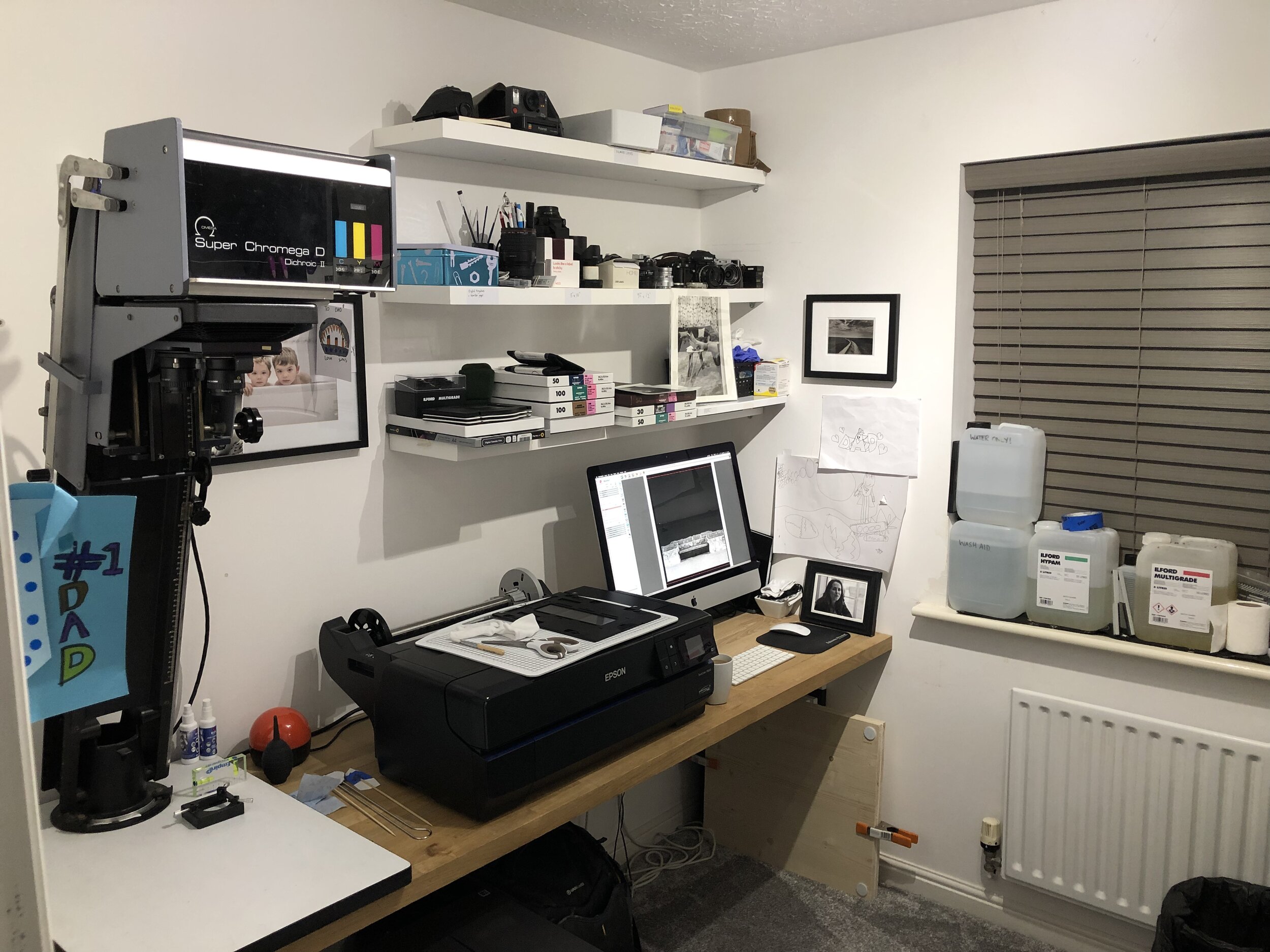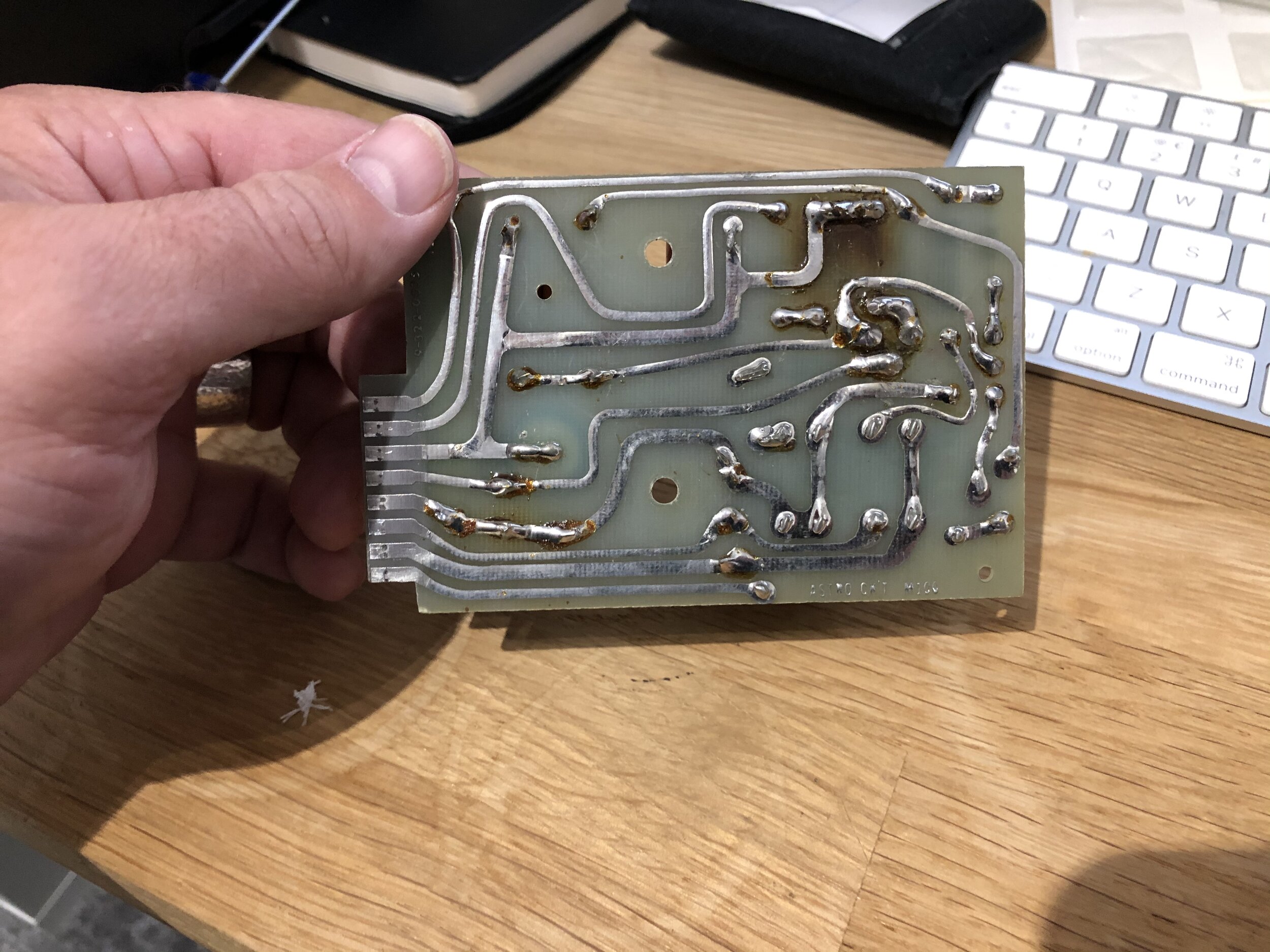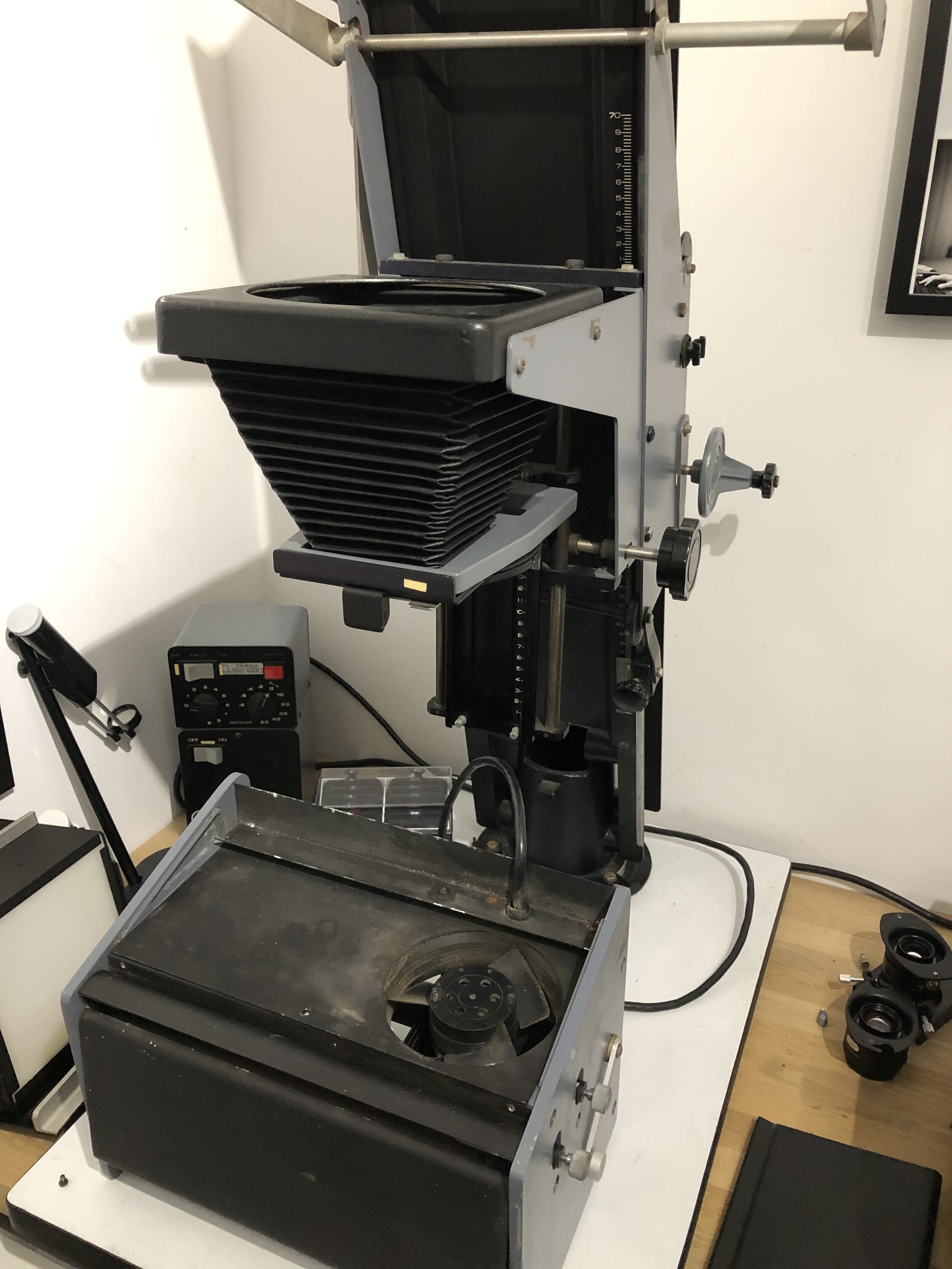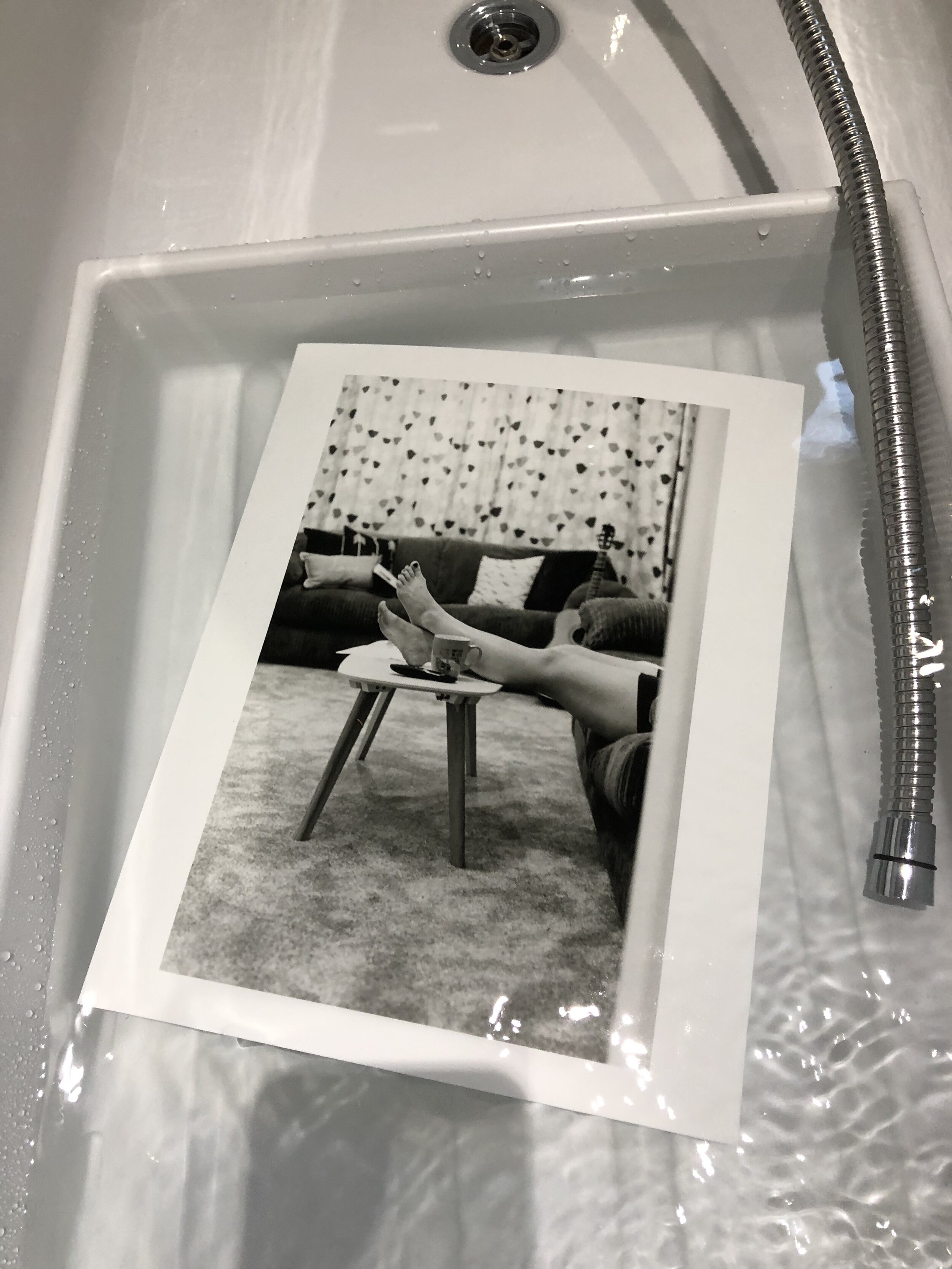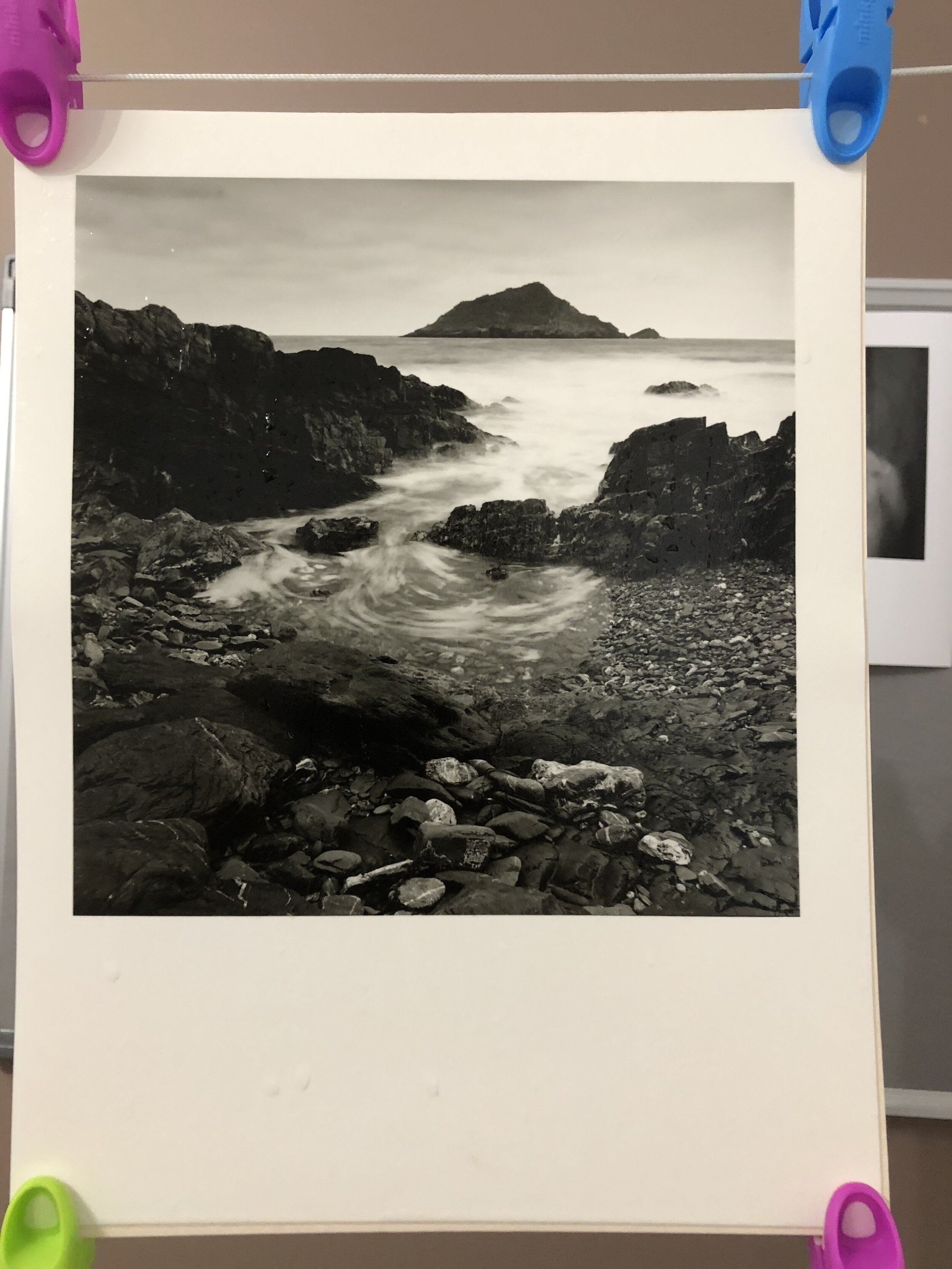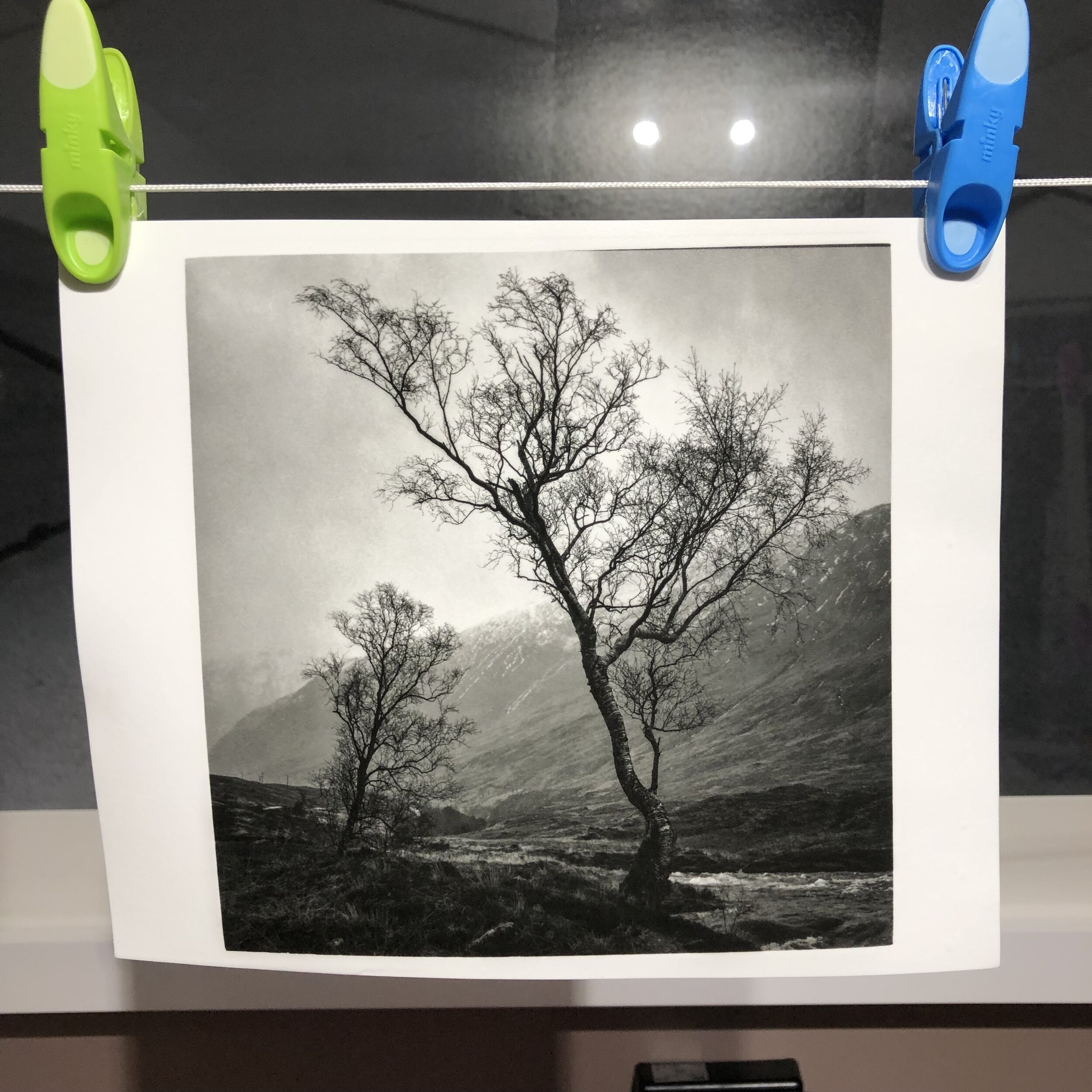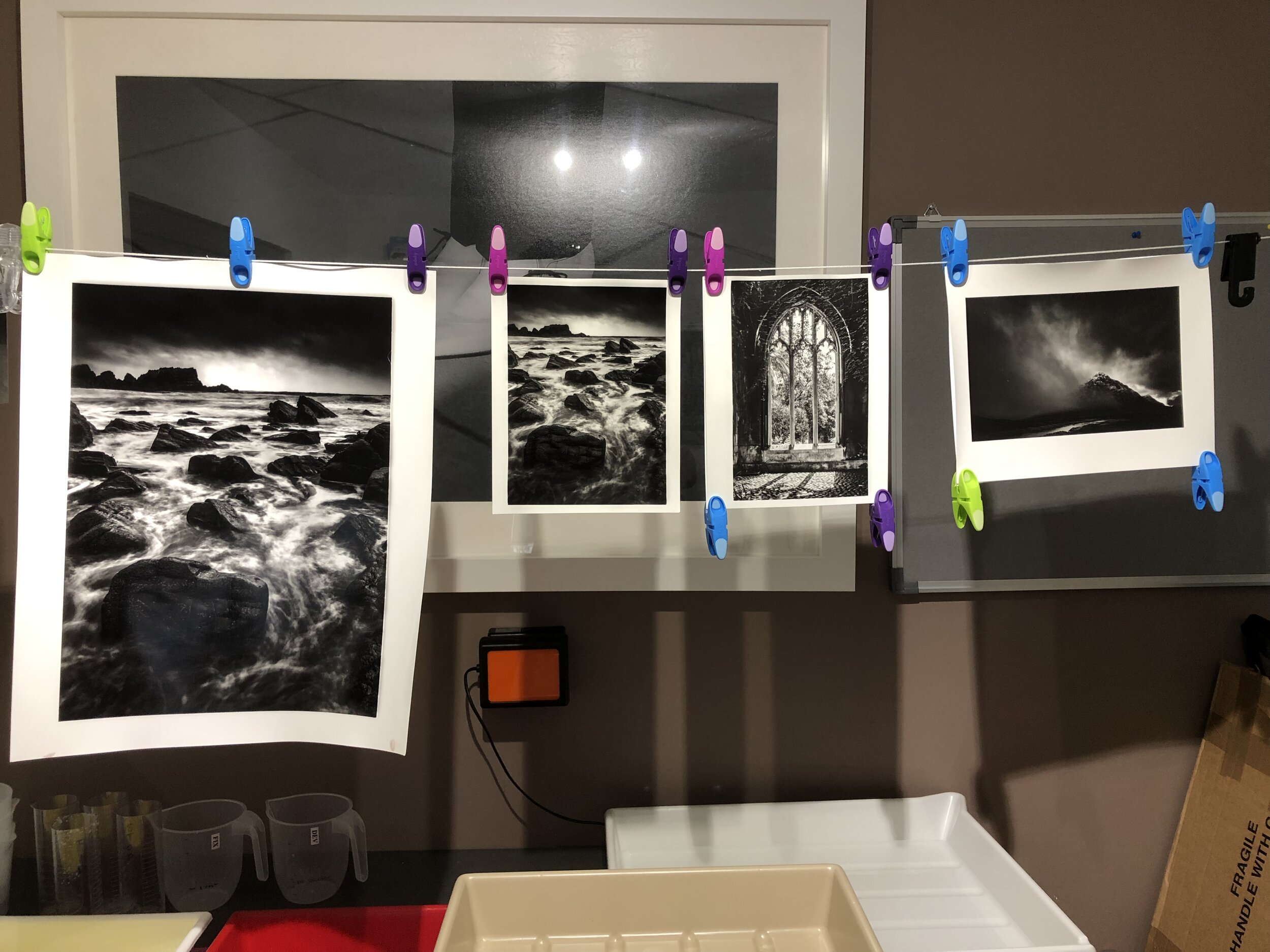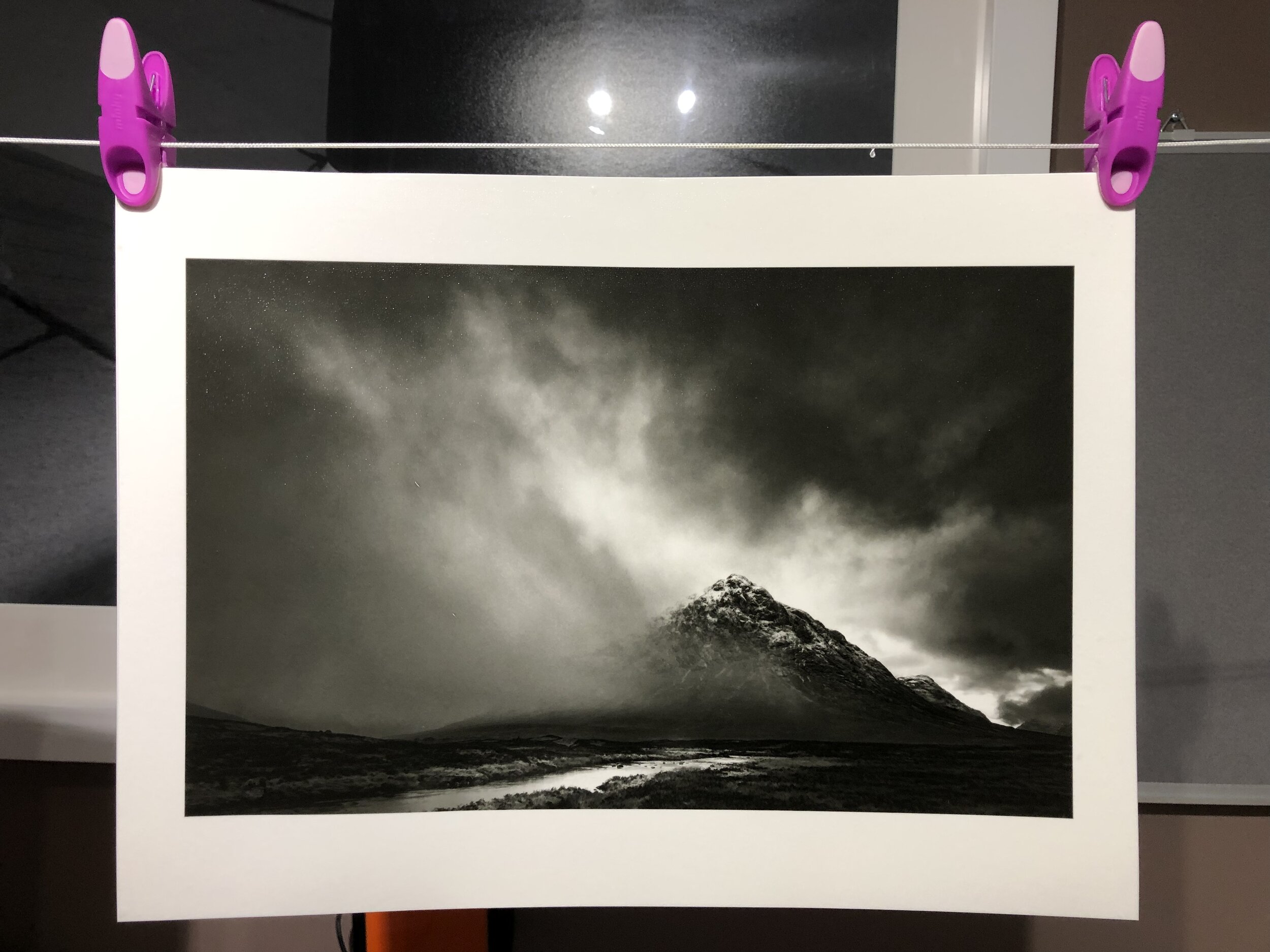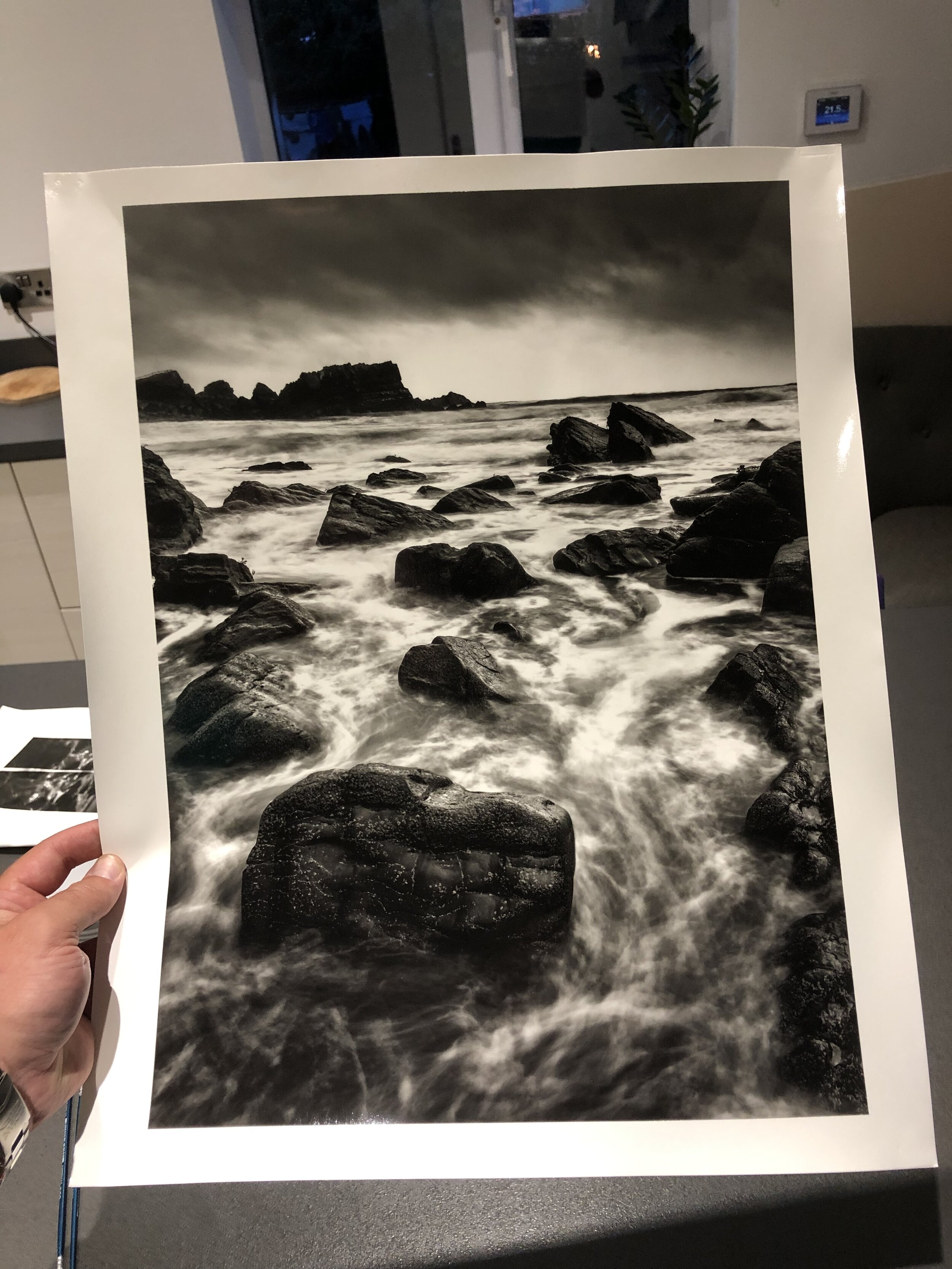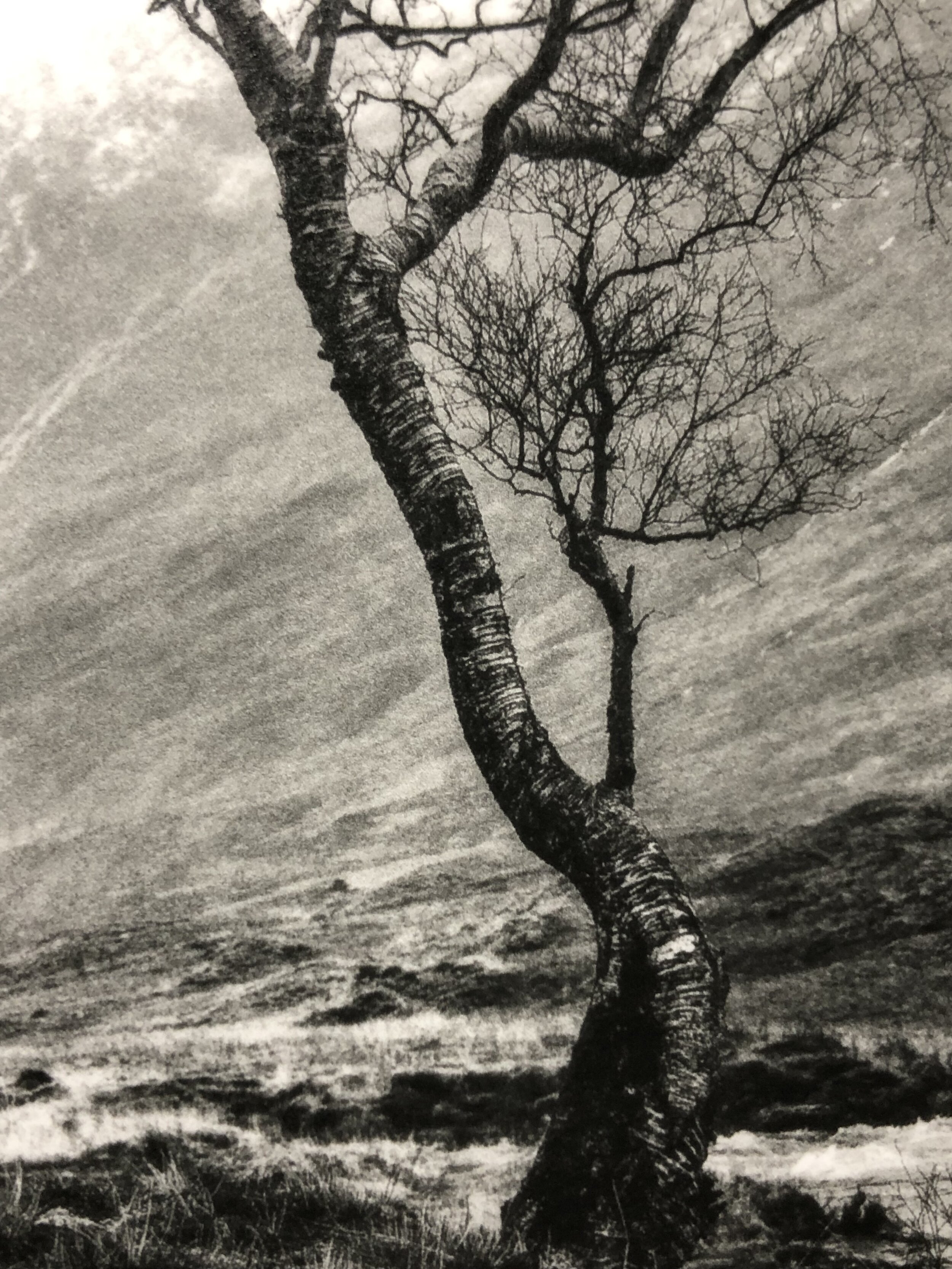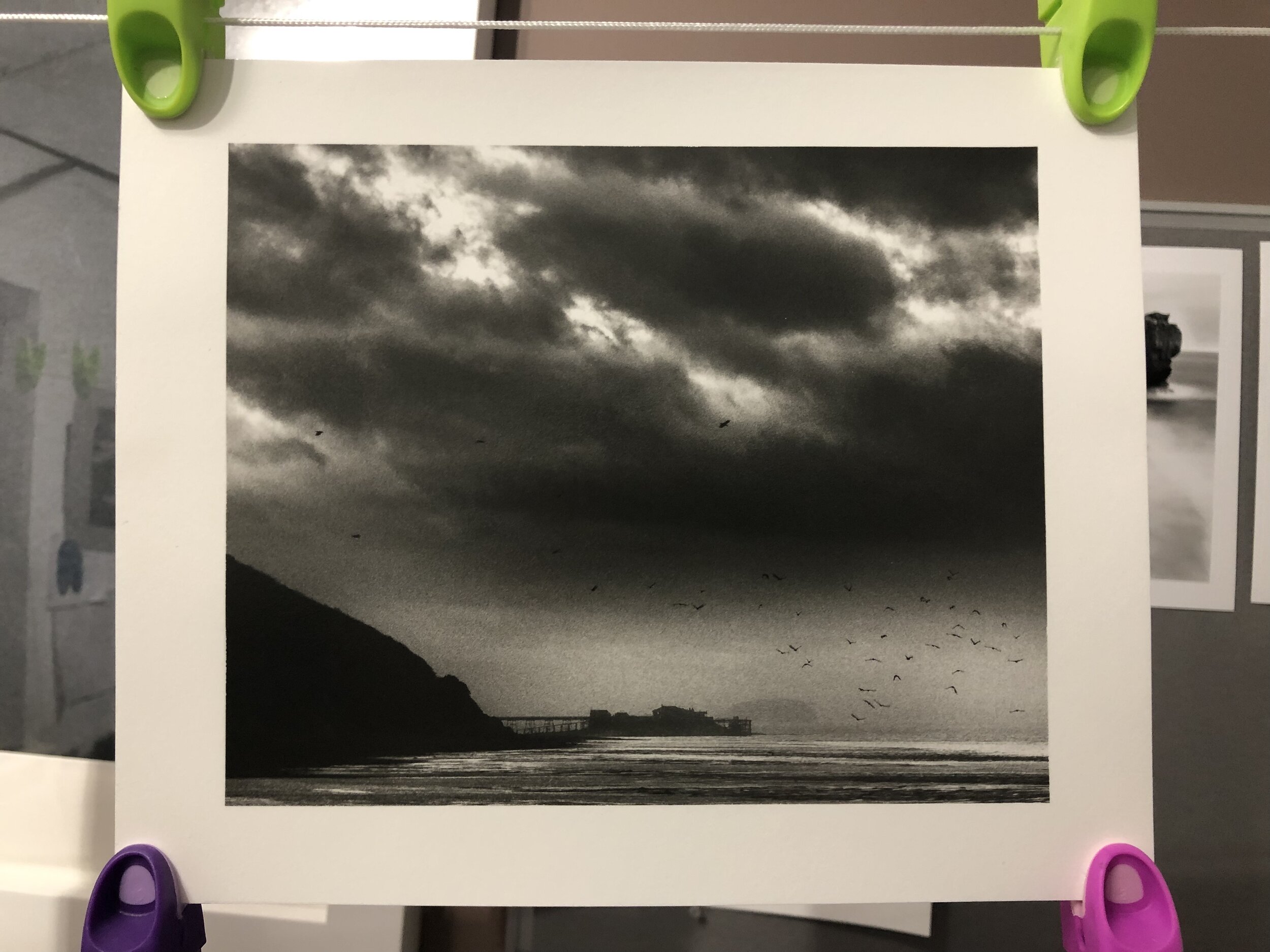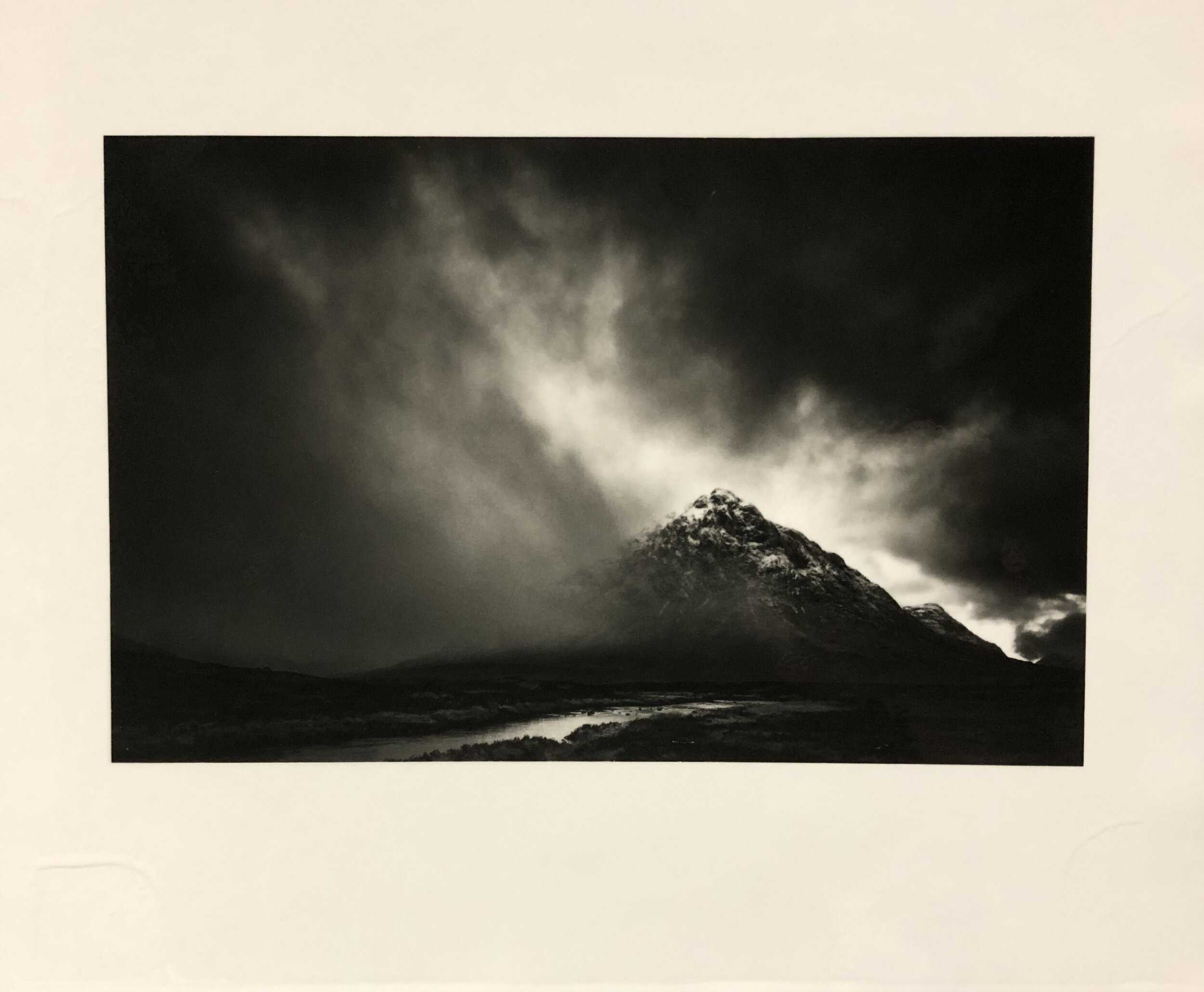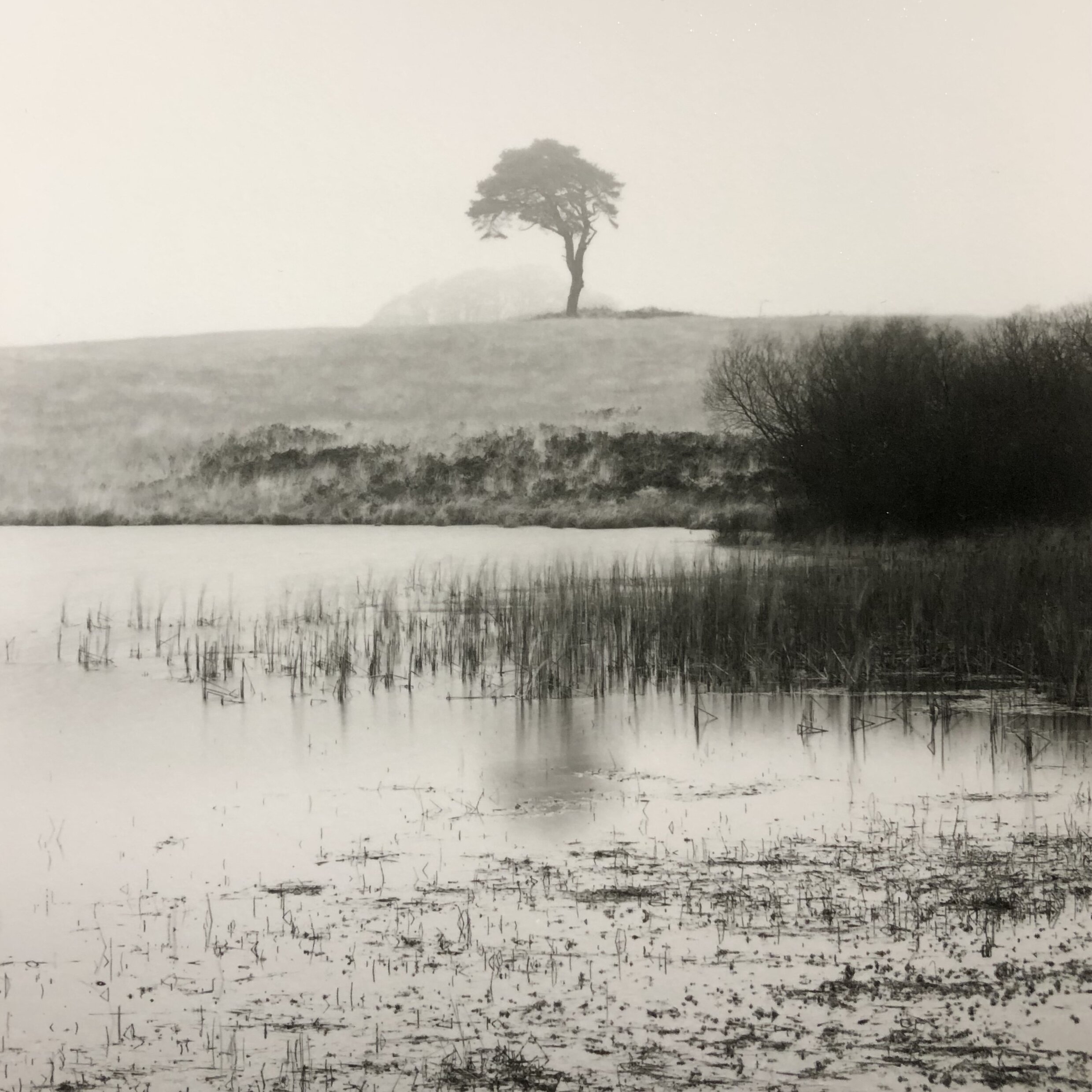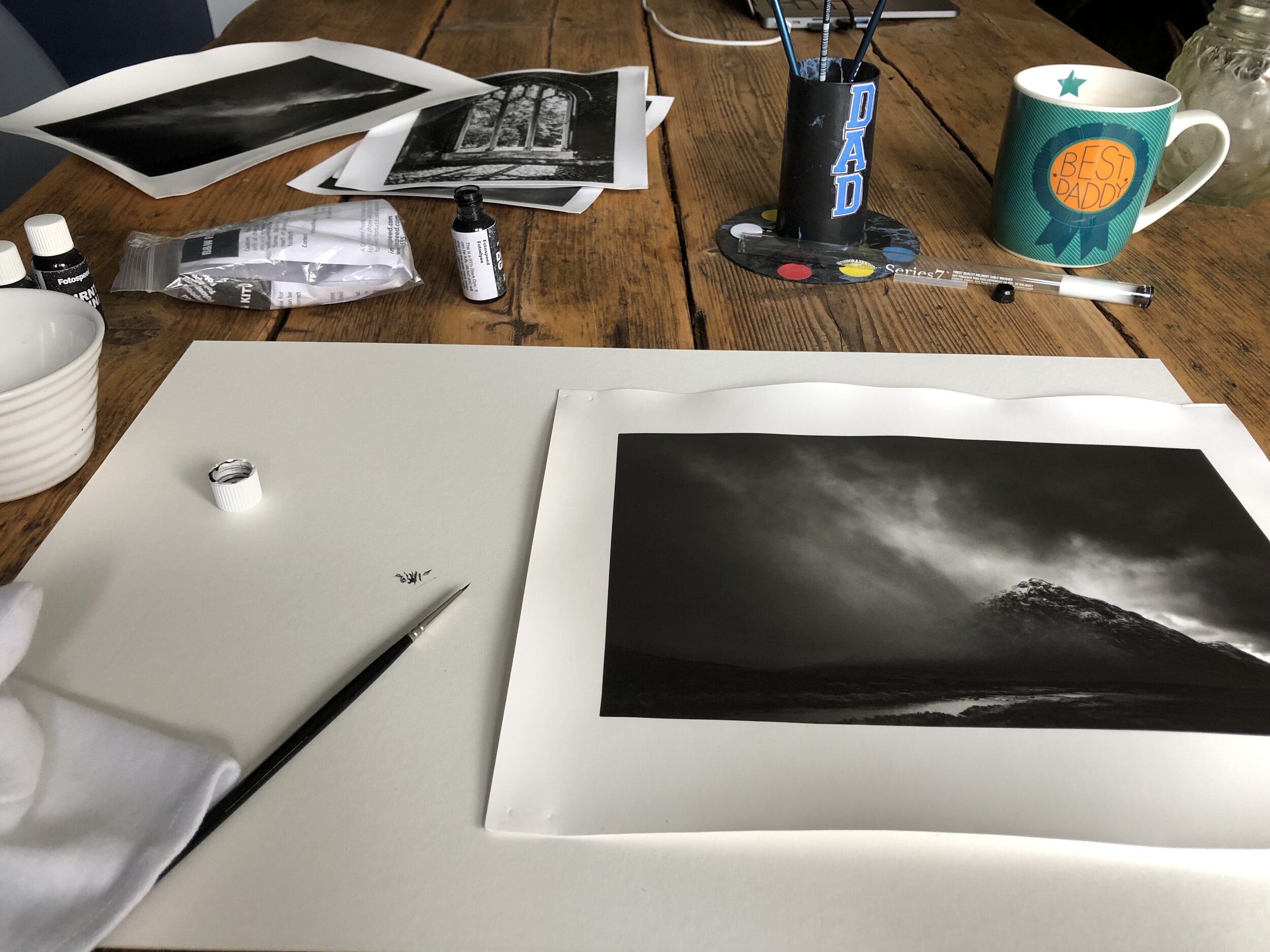A step into the dark.
It has been roughly a year since I made the decision to utilise the space that I had at home to create a darkroom. I was already using a spare room as an office/dumping ground for all my photography gear so after chucking out a load of items that I had hoarded over the years and utilizing a spare piece of kitchen worktop I had in my garage I managed to set up a small but workable darkroom.
I have been shooting film in various formats on and off for around two years. Scanning my negatives and using a computer to process and print them felt like I was falling short of the completely analog experience. It almost felt like cheating. I don’t think that there is anything wrong with the hybrid approach, but I wanted to expand my skill set and learn to print using traditional techniques.
As Ansel Adams has undoubtably been a huge influence on me, being able to make prints using the same techniques and processes as he did feels quite special to me, certainly one that I wanted to learn.
I shoot in various formats, those being 35mm, 6x6 and 4x5 large format. The first step was to find an enlarger that was flexible enough to cover all my needs and after a lengthy search found a Omega Super Chromega Dii at a price that was reasonable.
Photographers are very lucky these days that as well as books we have an endless supply of information at our fingertips. The internet is filled with articles, videos and a connection to incredibly knowledgeable individuals through social media so picking up the basics is straightforward.
That’s not to say that a little hard work and commitment to learning isn’t required. There isn’t a shortcut to everything. I don’t think photography is a subject where a slap dash approach is one that ends in good results. Certainly not if you are trying to achieve exceptional results.
As any sensible person would, I did plenty of research before I even considered the purchase of an enlarger and everything else that I would need for my setup. I knew that it would be a steep learning curve and one that would probably go on for the life of my photography, but as I find learning more about photography a hugely enjoyable experience this wasn’t something that I considered (No pun intended) a negative.
My first attempts at producing prints were fairly hit or miss. I wasn’t paying enough attention to detail. This is one thing that is important if you want to produce good, repeatable and consistent results. I guess the excitement of making a print in this way had to wear off before I could really concentrate on what I was doing. The excitement hasn’t worn off in the slightest, but my concentration levels have certainly improved.
Watching videos on YouTube by Ilford Master Printer Dave Butcher gave me a good insight into split grade printing. It is worth using YouTube as a source of information but as with many things there are some videos that give good advice and others that are less helpful so be selective of the advice that you follow.
Split grade printing has undoubtably improved the control that I have over the images that I print. Being able to produce separate test strips relating to exposure and contrast makes it a lot easier to get to the point of a good working print. This obviously only applies to multigrade papers and requires the purchase a graded filter set.
Dodging and burning is also taking a while to master. Using a computer to dodge and burn is one thing but doing it while the clock is running and trying to be as accurate as possible is another. I’m sure with practice and refinement of technique It will become easier but there have been more than a few prints consigned to the B.I.N file due to bad technique.
The other thing I have had to consider when producing prints, more so when using fiber papers is ensuring that each print is fixed and washed correctly. I use a two-bath technique for fixing, followed by a washing sequence using an archival washer and Hypo clearing solution. This seems to be enough to ensure that most chemicals are removed from the paper. I usually tone my prints using selenium so ensuring they are washed properly before this is essential. From what I’ve read, prints that aren’t washed properly tend to be more susceptible to staining during the toning process.
It is worth mentioning at this point that the negative that you produce will have a big impact on how easy it is to make good prints. Pay as much attention to producing a negative suitable to your vision of the print. This may involve expansion of contraction of developing times, using graduated, coloured or polarising filters at the point of capture and metering each scene carefully. Paying close attention to shadow and highlight areas.
Pre visualisation of the final print plays an important part of this process and a slow, methodical and well considered approach is recommended. This applies more when making landscape prints when time is on your side and a well exposed negative covering a full range of tones is preferred. This isn’t necessarily practical for genres such as documentary photography where speed can mean the difference between success or failure.
I am still very much in my infancy when it comes to producing prints, but I am seeing an improvement with the more time I spend under the warm red glow of my darkroom safe light.
I will be adding a page to my website mattwalkley.photography that will allow people to follow my efforts in the darkroom and will try to update this on a regular basis. A selection of prints will also be available to purchase through my site.
If anybody reading this is seriously considering taking the plunge into printing then I would highly recommend it. It’s a very rewarding experience that keeps getting better the more time you put into learning the craft. Hand made prints are undoubtably very special and printing of any kind forms an integral part of the photographic process.
There will be a lot of learning involved and I can’t say that it’s the cheapest way of producing prints but each print will be uniquely beautiful and you can proudly say it was handmade and will last many lifetimes.
Matt.
